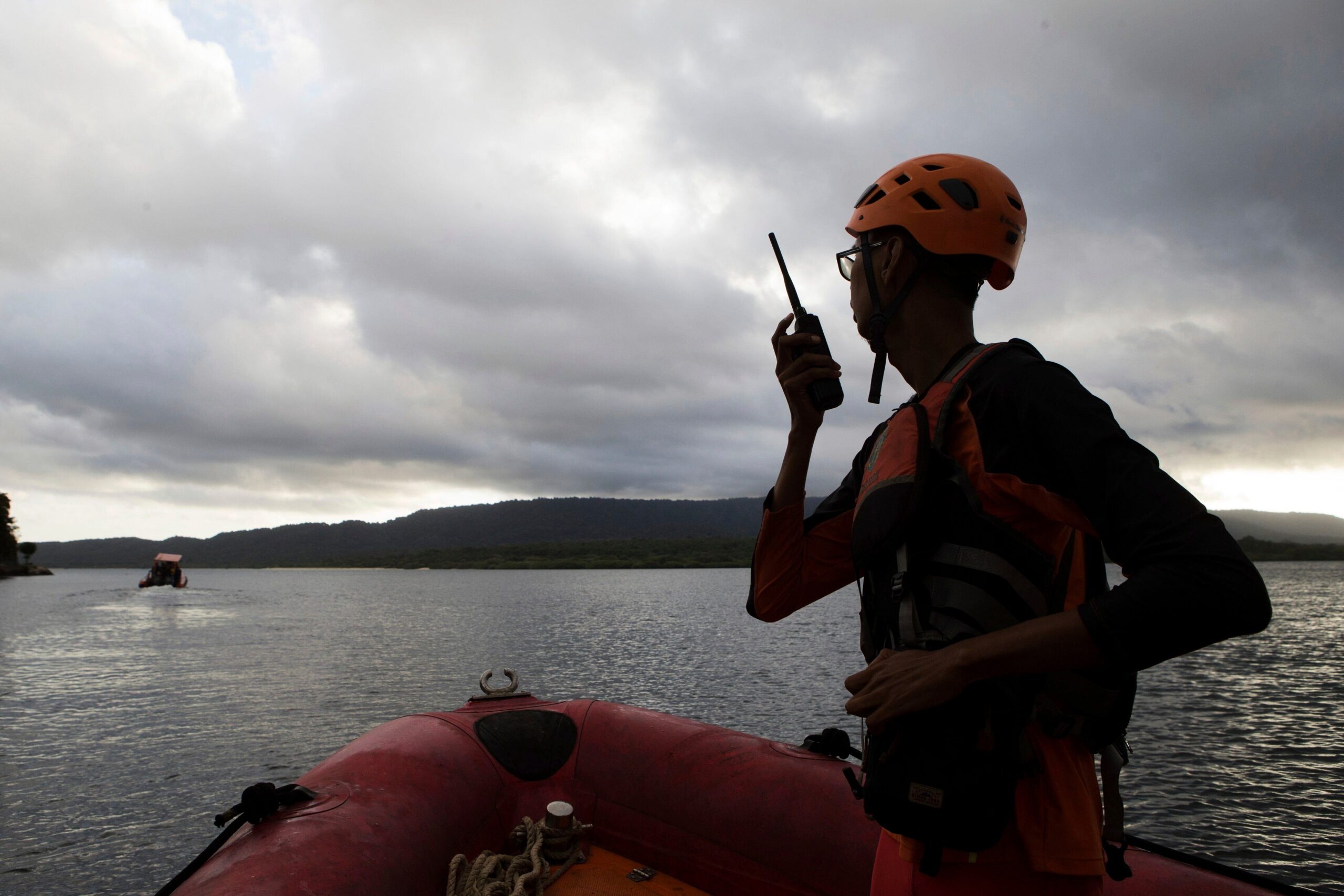GILIMANUKAuthorities in Indonesia used helicopters and military ships on Friday to step up their search for 29 individuals who have been missing for nearly two days near the popular island of Bali. But due to low visibility, the search was later halted.
According to Ribut Eko Suyatno, deputy commander of operations at the National Search and Rescue Agency, the search, which had been suspended overnight due to poor visibility, restarted with around 160 rescuers, including police and military.
Suggested Videos
Unfavorable weather conditions
About 20 ships and fishing boats were deployed for the sea search, while three helicopters and a thermal drone had participated in the air search over the Bali Strait, according to Suyatno. At least three navy ships have been deployed, he said, as weather forecasts call for heavy seas and choppy waters around the Bali Strait on Friday.
No fresh survivors or bodies had been discovered by Friday evening, despite the agency’s publication of images and videos showing searchers searching the waters from rescue boats.
Due to terrible weather and low visibility, the search was halted Friday evening. According to Suyatno, it will begin early on Saturday.
Late on Friday, Suyatno informed reporters that visibility had dropped to 3 kilometers (less than 2 miles) from 10 kilometers (just over 6 miles) on Thursday due to heavy fog, waves as high as 2 meters (more than 8 feet), and strong winds that were impeding our search efforts on the second day.
Short trip
When the KMP Tunu Pratama Jaya ferry sank around 30 minutes after departing Ketapang port in East Java late Wednesday for a journey of roughly 5 kilometers (3 miles) to Bali’s Gilimanuk port, it was carrying 53 passengers and 12 crew members.
Late Thursday, the agency announced the identities of six confirmed dead and 29 survivors. However, after a male passenger who was first reported missing went straight home and only came forward to authorities on Friday, Suyatno changed the number of survivors to thirty. By Friday night, 29 individuals were still unaccounted for, based on the passenger manifest.
Family members await news
While distraught families waited at the port office in Gilimanuk on Friday, looking for word of missing family members, survivors were receiving treatment at Bali’s Jembrana Regional Hospital.
In a hospital handover ceremony, television reports showed family members sobbing as they accepted their loved one’s body. Among these was Bintang Nur Hidayat, who two weeks ago lost his wife, Nindi Elly Rosita.
“Please pardon me, Nindi,” Hidayat whispered while sobbing in the arms of his family. “Please pardon me; I am unable to care for you.
While his 27-year-old son sobbed beside him, his father, Achmad, told reporters that the newlyweds, who were headed to Bali for their honeymoon, leaped off together when the ferry started to sink.
Achmad, who only goes by one name, claimed that his wife slipped out of his grasp due to the massive wave created by the ship’s quick sinking. According to his son, Hidayat eventually discovered his wife’s dead at the hospital after he continued to shout out her name while being hoisted into a lifeboat.
The cause is being investigated.
The cause of the sinking is being looked into by Indonesian officials. Rescuers were informed by some survivors that the ferry, which was transporting 22 vehicles, including 14 trucks, seemed to have a leak in its engine room.
However, Bejo Santoso, a survivor, told Metro TV that she thought the sinking was caused by strong currents and huge waves.
Santoso, who was going to Bali alone, claimed that the ferry rolled to the left halfway to Gilimanuk after being struck by the heavy waves multiple times. He recalled how the boat sank in less than five minutes after trucks, busses, and other vehicles instantly dropped and stacked up on the left side.
“There were many life jackets in the ferry, but in such a short time, only the people on the outer deck could reach them, including me,” Santoso claimed, adding that everything happened so quickly that there was not enough time for the crew to give instructions. He claimed that he threw one overboard right away and dove into the ocean.
According to Santoso, I was able to use a life jacket as a floating tool for hours at sea before a fisherman came to our aid in the early hours of the morning with his boat. According to his estimation, just half of the passengers—some wearing life jackets and others with two lifeboats—were able to jump into the ocean.
He and three other male passengers swam in rough waves for about six hours, but one of them, who claimed to have lung disease, passed away after nearly four hours because of stress and consuming too much seawater, according to Santoso. Until they were rescued, the trio held onto the man’s body.
Disaster history
In Indonesia, an archipelago of more than 17,000 islands, ferry accidents are common, and lax enforcement of safety rules is frequently to fault.
following the 2023 and 2021 boat capsizings off Indonesia’s Sulawesi, which left seven people dead and eleven missing.
In 2018, 167 persons were killed by an overcrowded boat in a deep volcanic crater lake in the province of North Sumatra.
In February 1999, an overcrowded passenger ship carrying 332 people sank, making it one of the biggest disasters the nation has ever seen. Only twenty people survived.
___
From Jakarta, Edna Tarigan and Niniek Karmini contributed to this report.




